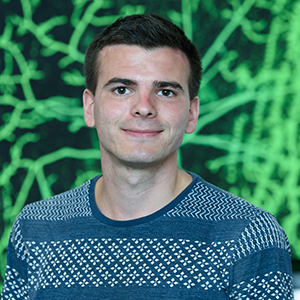Dentate granule cell activity during immobility is required for the formation of pattern-separated memories
|
1 Institute of Experimental Epileptology and Cognition Research / University of Bonn Medical Center |

|
In their natural environment, vertebrates need to efficiently navigate through complex environments and form memories of these experiences. Remarkably, they can discriminate similar sensory percepts from one another. This capability is thought to depend on the dentate gyrus, which can generate dissimilar patterns of neuronal population activity from similar sensory-driven inputpatterns, a process called pattern separation. In-vivo 2-photon imaging of dentate granule cells (GCs) has now revealed a novel synchronized, and highly structured activity pattern that occurs only during immobility. We hypothesized that this activity is important for generating memories that require dentate gyrus pattern separation. Using a combination of behavioral testing and closed-loop optogenetics, we show that activity of GCs during immobility is required for the formation of precise spatial memories.
Light-based selective inhibition of GCs was achieved by expressing the inhibitory opsin halorhodopsin in a GC-selective mouse line. We first identified a behavioral test that is dependent on GC activity, the object-pattern-separation task. Here, mice have to detect the gradual displacement of an object previously encountered at a different position. Remarkably, closed loop inhibition of GCs only during immobility during acquisition of object position prevented memory formation. This was also the case if GC inhibition was only carried out when mice were immobile at positions remote from the objects. Performance in a passive-avoidance-conditioning task and a spatial working-memory task was not affected by silencing of GCs.
These experiments suggest that sparse and synchronized activity of GCs during immobility is important for the formation of pattern-separated memories.
